specialty boards
The specialty boards run the gamut in size, but generally range somewhere between the small and large boards. Prices also cover a pretty wide range. Here are a few specialty boards, all of which have been sold or given away as gifts. (Earlier specialty boards can be seen on this page.)
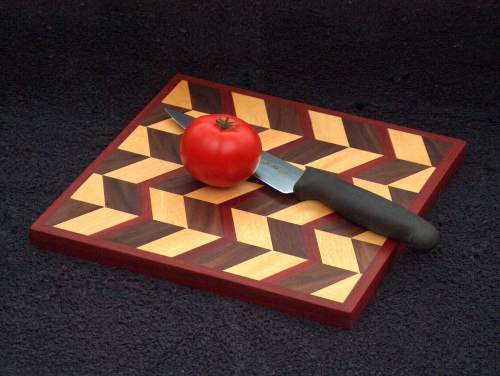
This is the first of my 3-D boards. I consider this an experiment gone right. The wood is a combination of walnut, yellow heart and satine (also known as bloodwood). I like the design and have made other boards with a similar pattern.
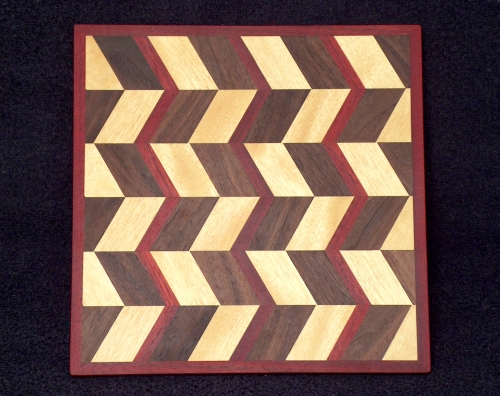
This board is about 10" square and about 5/8" thick. Future boards with this pattern will likely be a bit bigger in all dimensions.
Although it doesn't show very well in the pictures, the angled pieces create a nice 3-D effect, somewhat like an Escher drawing.
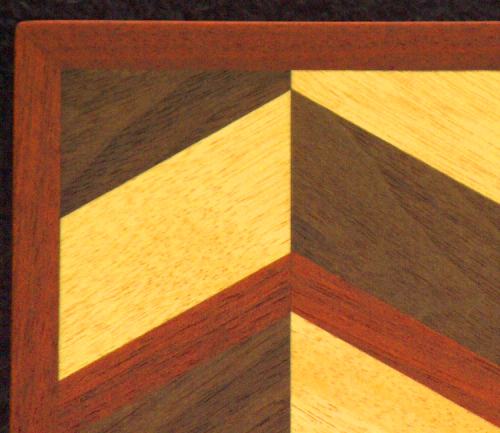
Here's a detail shot of the joinery. This photo comes close to showing the yellow tones of the yellow heart wood. The red/brown/yellow color combination works nicely.
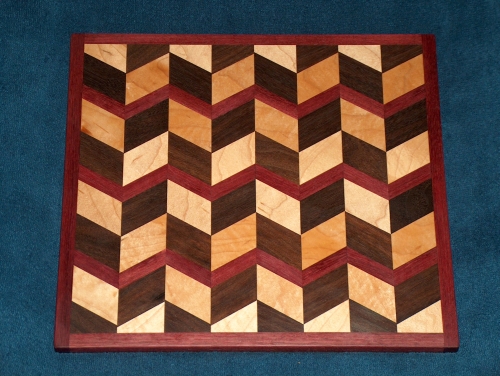
Here's another example of the 3-D effect. This board is maple, walnut and purpleheart. It's a bit bigger, at about 12" square.
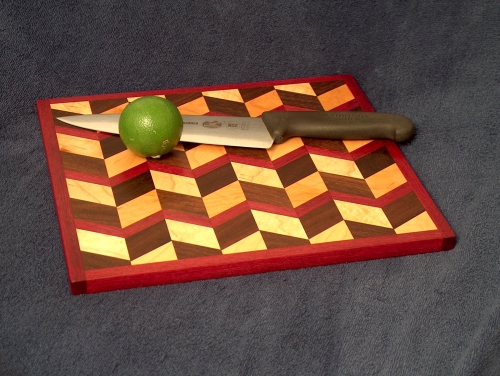
I opted to not use miter joints on the outside border for this board, simply because I wasn't happy with the original mitered frame. I still think it came out looking nice.
Scroll down for another board of this basic design that ended up turning into a serving tray.
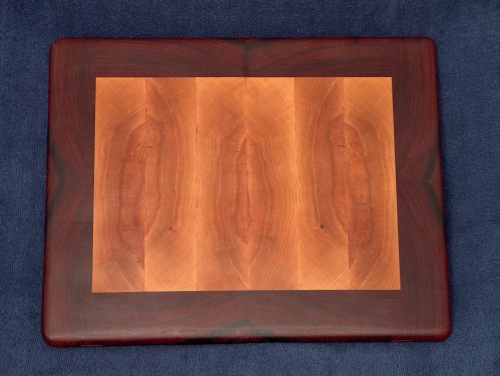
Here's another maple and padauk end grain board, modeled after the one shown on this page. This one has maple splines on each joint. The quality of this picture leaves a bit to be desired, but that's just as well, since there are some flaws in this one. I'm not yet happy with it, so it'll likely go back into the shop soon for some rehab.
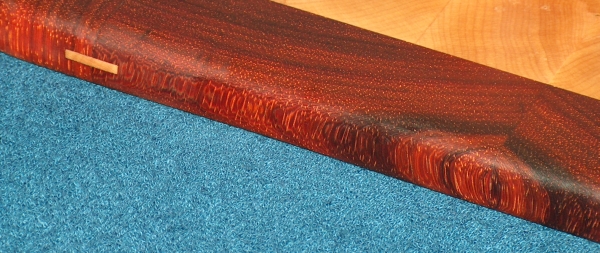
Here's a shot showing one of the spline joints and some of the border grain.
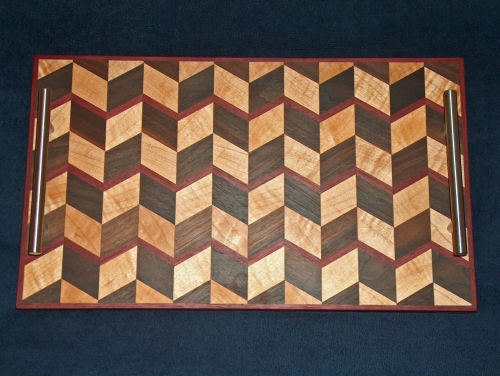
And here's what happens when I make a cutting board that's just a bit too long for its width...it becomes a serving tray.
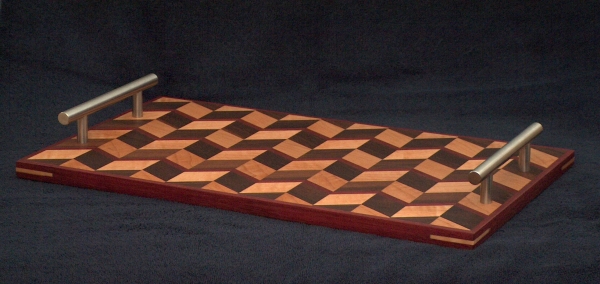
This one is made of walnut, maple and purple heart, and it's got feather splines on the corners, not only to better hold the frame in place, but to look cool, too.
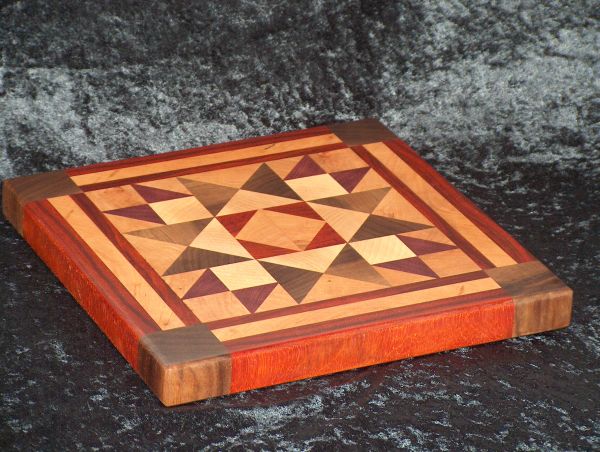
A co-worker of mine is into quilting, and she asked if I could make a quilt patterned cutting board as a gift for a fellow quilter. After some trial and error, here are the results. These boards use padauk, cherry, walnut, maple, and purple heart woods. The entire board is end grain, which makes the best cutting board surface.
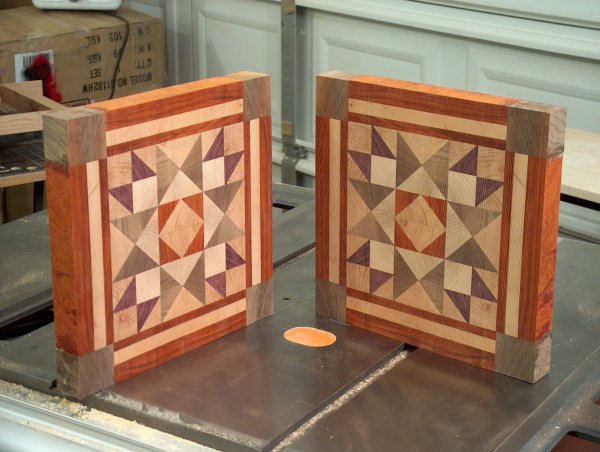
Both boards were fabricated as a single block, then cut in half, resulting in two matching boards. I did slightly different edge treatments, largely because I try to avoid exact duplicates of any of my work. Both boards were purchased to be given as gifts to quilters.
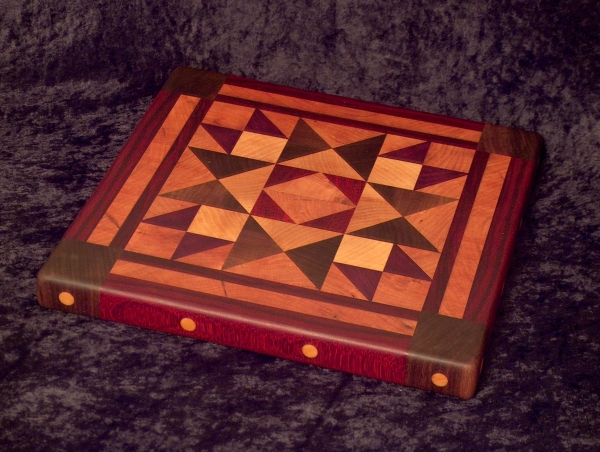
These two boards are my favorites so far, and I hope to make another batch of quilt boards in the future. The fabrication method lends itself to making several at a time. They aren't cheap, but if I get enough requests, I'll make some more.
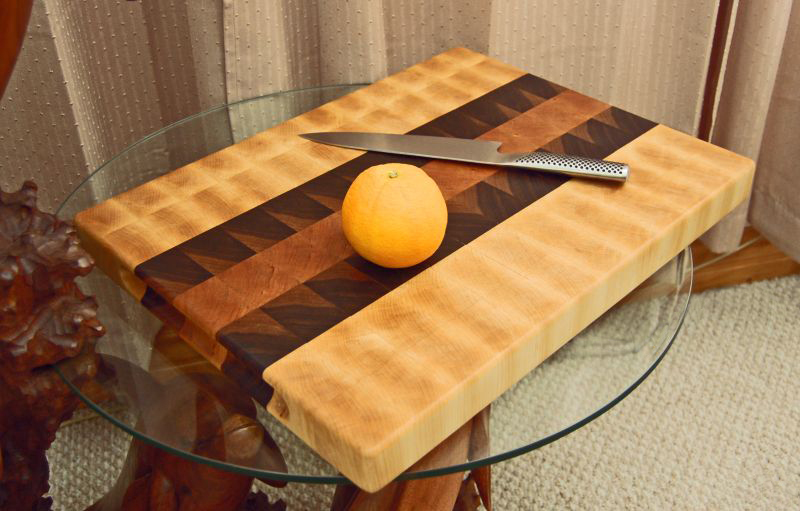
This is a big cutting board I made for my nephew, the chef-in-training. It's about 20" x 15" and about 1 3/4" thick. It's made of maple, walnut and cherry.
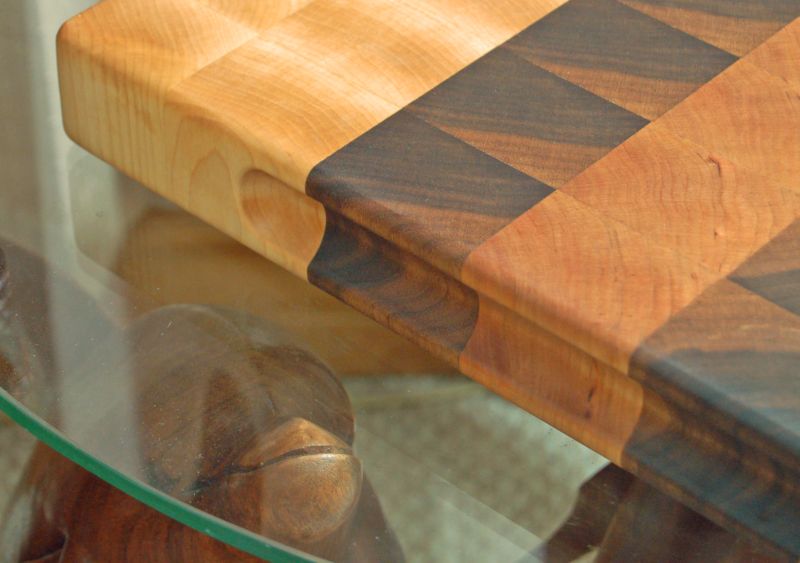
Here's a close-up shot of the joinery and the finger grips cut into the ends of the board.